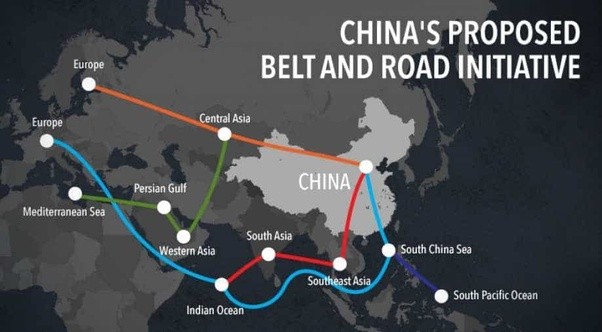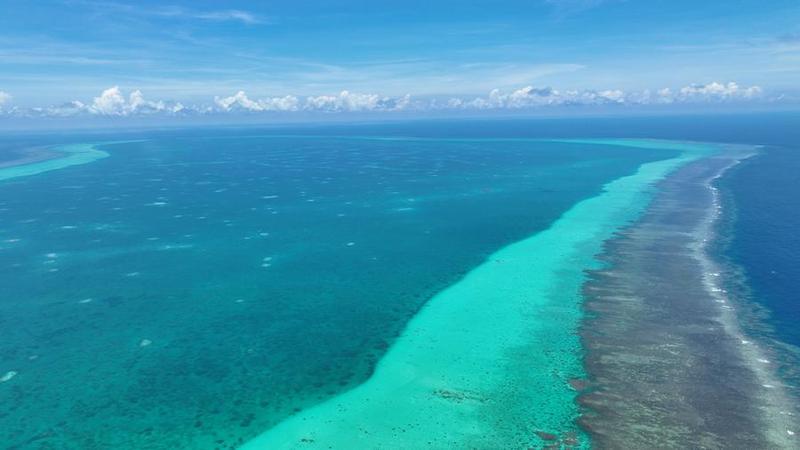China in a spot as BRI starts crumbling under heavy weight of mistrust & opacity
To counter China’s influence in the Indo-Pacific region, which Beijing exercises through aggressive funding in infrastructure projects under the Belt and Road Initiative, the US on November 10 announced to invest $553 million in building a deep-water shipping container terminal in Sri Lanka’s Colombo Port.
China has financed around 300 projects in Sri Lanka since 2000, according to AidData, a research lab at the US-based William & Mary’s Global Research Institute. Beijing, as per the AidData, has provided through aid and credit more than $20 billion to the island nation.
While the Philippines has rejected China’s funding for its three railway projects. China was slated to build two of the rail lines on Luzon, the largest and most important island of the Philippines and the third on the country’s southern Mindanao Island, Indonesia’s Benar News said.
Instead, the Philippines’ three railway projects worth around $5 billion will be now funded by Japan, South Korea and India, Reuters said, quoting the Southeast Asian country’s Transportation Secretary Jaime Bautisa as saying.
These developments have taken place just days after Chinese President Xi Jinping, at the third Belt and Road Forum for International Cooperation meet in Beijing, extolled the virtue of the BRI by stating that it “pursues development, promotes win-win outcomes, and inspires hope.” But China’s self-patting over the BRI met with rude shock after Italy and the Philippines announced their decision to exit from the China-led ambitious infrastructure project
Italy’s announcement rather came in September during the G20 Summit in New Delhi. For China, Italy’s announcement was a major body blow to it as it was the only G7 country which was signatory to Beijing’s infrastructure project that President Xi Jinping launched in 2013.
Philippines President Ferdinand Marcos Jr was notably absent from the Belt and Road Forum for International Cooperation meet in October, which saw the presence of only 23 heads of state in comparison to 37 at the earlier meet of the BRF in 2017.
In a sense, low attendance showed diminishing China’s influence in the world and also, significant disaffection that the BRI has created among partner countries due to unsustainable loans for projects from Beijing. As per the AidData, China’s loans for BRI projects have an interest rate of 4.2% with a grace period of fewer than two years and a maturity of fewer than 10 years.
Poor countries like Nepal are writhing in anguish as China has declared even those infra projects which were never a part of the BRI as those constructed under BRI funds. In fact, China has unilaterally included several Chinese-funded projects in Nepal within the BRI framework, such as the Pokhara International Airport, Damak SEZ, and a few highways.
These projects were initially agreed upon mutually, even before Nepal’s formal participation in the BRI in 2017. During Nepal Prime Minister Pushpa Kamal Dahal alias Prachanda’s just concluded eight-day visit to China, Kathmandu’s request to convert loans provided for construction of infrastructure like Pokhara International Airport into grants or aid was turned down by Beijing.
In Indonesia, China-built high-speed rail that links Jakarta with Bandung has been operationalised. China provided $7.3 billion for the rail project. However, skepticism persists as to when it will return a profit.
It is a telling example of China’s opacity and its approach towards countries that are part of its BRI framework, say analysts. It is also hinting about the presence of dichotomy in China’s external approach; it wants to lead countries of the Global South, but does opposite to poor and developing countries’ interests.
All ASEAN countries are part of the BRI, but only heads of state or government of Indonesia, Cambodia, Laos, Thailand, and Vietnam attended the third BRF meeting in October this year. From Africa, only a few countries’ heads of government participated in the BRF meeting and they included Kenyan President William Ruto and Ethiopian Prime Minister Abiy Ahmed Ali.
Egypt and Mozambique sent their prime ministers, rather than presidents to Beijing to attend the forum. Except for eSwatini and Mauritius, all African countries are China’s BRI partners. From Europe, only Hungarian Prime Minister Viktor Mihaly Orban, Russian President Vladimir Putin and Serbian President Aleksandar Vucic attended the Forum.
Turkish President Recep Tayyip Erdogan who shares good relations with Xi Jinping, also gave a miss to the third BRF meeting. He had joined the first BRF meeting in 2017. Similarly, there were notable abstentions from the Middle East. The Israel-Hamas war could be a factor behind it, because only the UAE could manage to send its lower rank representative to attend the forum in Beijing.
It was yet again a complete nonparticipation from the Latin America and Caribbean region. According to Global Times, 21 Latin American and Caribbean countries have so far signed BRI cooperation documents with China.
But no country from the region has ever sent a head of state or government to the BRF, indicating their lack of interest in China’s ambitious infrastructure project. On account of its own dwindling economic fortune, China too has shown reluctance in opening its purse.
Its share of lending under BRI funds to low-and-middle income countries has fallen from 65% in 2014 to 50% in 2017, and again from 49% in 2018 to 31% 2021, the AidData said in its 400-plus page report published on November 6. China has lent $1.3 trillion since 2000, almost all to Belt and Road Initiative countries.
Of the total loans provided by China under BRI to low-and-middle income countries, 55% of them are now in their repayment period which will increase to 75% by 2030, the AidData said in its report. But nearly 80% of China’s loans are currently supporting countries in financial distress, the AidData said.
No matter how grand China’s projection about the BRI, its focus on big infrastructure projects is unlikely to return, The Washington Post said. Instead, China has devised a smart way to milk money out of the BRI framework. Those countries which are already in debt distress due to China-led unsustainable projects, are seeking to refinance with emergency rescue loans from Beijing. The AidData has warned them from doing so. They “must be mindful of the danger of swapping less expansive debt for more expensive debt,” the AidData said.












